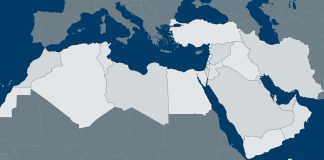The Russian invasion of Ukraine had two goals. The first was to take control of Ukraine, intending to complete the task begun in Belarus – the task of rebuilding Russia’s strategic buffers and securing Russia from attack. The second goal was to demonstrate the capabilities and professionalism of the Russian military and to further deter hypothetical acts and increase Russia’s regional influence. The two goals were interlocked.
The occupation of Ukraine has not been achieved, but it is not a lost cause. Perceptions of the strength of Russia’s military, however, have been badly damaged. There is no question but that Russian planners did not want to fight the war Russia has been fighting. Rather than a rapid and decisive defeat of Ukraine, Russia is engaged in a slow, grinding war unlikely to impress the world with its return to the first ranks of military power. At this point, even a final victory in its first objective will not redeem the second. It is important to start identifying the Russian weaknesses.
The first problem was a loss of surprise. Carl von Clausewitz placed surprise at the top of warfare. Surprise contracts the time an enemy has to prepare for war. It also imposes a psychological shock that takes time to overcome, making it more difficult to implement existing plans. And it increases the perceived power of the enemy. In Ukraine, however, extended diplomacy gave Kyiv time to adjust psychologically to the possibility of war.
Moscow failed to understand its enemy. Russia clearly expected Ukrainian resistance to collapse rapidly in the face of the massive armored force it had gathered. It did not expect the Ukrainian populace to fight back to an extent that would at least delay completion of the war.
The purpose of war is to break the enemy’s military capability. The Ukrainian military had a diffuse center of gravity and was at distance from the Russian armored battle groups. In addition, the population has fought back, increasing the amount of time necessary to end the resistance.
Russian war plans centered on three armored groups based in the east, south and north. Tanks have become vulnerable to infantry anti-tank weapons. Rather than brushing infantry aside, Russia now must use infantry to clear away deadly threats to its tanks. The use of armor as the decisive force on the battlefield, and therefore the main force, has evolved. This seems not to have been accepted by Russian planners. Armored war peaked in World War II. Armor remains present, but we have not seen armor-to-armor combat since the 1973 Arab-Israeli War and to some extent in Desert Storm. This was a generation ago. War has moved on.
The three Russian armored battle groups were widely separated. They did not support each other. Instead of a single coordinated war, the Kremlin opted for at least three separate wars, making a single decisive stroke impossible. A single integrated command, essential for warfighting, seemed to be lacking.
The use of armor vastly increased the pressure on Russian logistics. Instead of focusing supplies on a single thrust, it had to focus on three, plus other operations. Logistics for the major armored forces seemed to have broken down, making war termination impossible and further extending the war.
In recent days, Russia has adapted and turned toward taking cities. This is generating an effective counterforce among fighters who understand the streets and alleys and use them to delay Russia’s progress. Fighting in cities is among the costliest and most time-consuming actions in war. Capturing cities takes resources and is not the key to victory. Cities take on importance only after the enemy force has been defeated and demoralizing the nation is essential. The city is the prize of war, not the military goal. Russia turned the conflict from a counter-military to a counter-population war, which increased resistance by sowing desperation in the cities.
Behind this was the fact that Russia simply failed to identify Ukraine’s center of gravity. It concentrated armor and sought a similarly concentrated force to defeat. Instead, the center of gravity has been essentially an informal guerrilla force constantly dispersing and reforming, not threatening the Russians with defeat but keeping them off balance.
This pushed Russia further toward a counter-population strategy, which decreased the effectiveness of its armor – both slowing its progress and pitting it against small groups that it’s not designed to fight.
Russia failed to shut down Ukrainian communications internally and with the rest of the world. Rather than isolating the enemy internally and externally, it allowed Kyiv to wage psychological warfare against the Russian attack on all fronts, undermining the Russian psychological goal of being seen as an overwhelming force.
All of this culminated in the Russians’ final mistake. They expected the overwhelming availability of armor to cause a rapid capitulation. Ukraine is a large country, and if it is to be occupied by armor, the armor must move rapidly. Obviously, they expected shock and awe to break Ukraine’s will to resist. The shock was dissipated by the loss of surprise. The awe was limited by Russia’s inability to concentrate strategic force, and ultimately by Ukraine’s mobilization of its population as a resistance force.
The Russians needed a rapid war to achieve their goals. The way in which they fought the war was not at odds with a final victory, but it was at odds with a fast one. Russia defeating Ukraine over the course of weeks or months is not awe-inspiring given their relative power. And Russia’s goal of displaying a first-rank military in order to appear awesome to its neighbors will not be achieved.




 Special Collection – The Middle East
Special Collection – The Middle East